The Aeron chair has millions of fans around the globe – and yet Herman Miller recently decided to redesign it from the ground up. Tamsin Bradshaw finds out why, and why the new Aeron is worth it.

When is the right time to remaster an icon? According to Thomas Niergarth, Vice President, New Product Commercialization, Herman Miller Inc., “When you can make something significantly better, that’s the time to change.”
This was the thinking behind Herman Miller’s decision to create version 2.0 of the Aeron chair, more than 20 years after producing the original. When it first appeared in 1994, the Aeron set a new benchmark in office furniture: using new technologies in material and manufacturing, it broke new ground in terms of comfort.
Bill Stumpf, who worked with Don Chadwick to design the original chair, “would define comfort as ‘The absence of awareness’,” says Niergarth. “It was our ambition at the time to make a chair that would fade away in the user’s awareness, so the user could focus on what they were trying to do.”
They succeeded – and far beyond their expectations. The Aeron became an icon of popular culture, taking its place in the Museum of Modern Art (MoMA), and making guest appearances in TV shows such as The Office, 30 Rock and The Simpsons (it’s God’s chair of choice in “Thank God, it’s Doomsday”).
Two decades later, the Aeron is still beloved – indeed, many die-hard fans are initially hostile at the prospect of their Aeron being ‘messed with’, says Niergarth.
And yet times have changed. The information we have access to has changed. Since 1994, “There have been a lot of advances in anthropometrics, in engineering know-how, and in materials and ergonomics,” says Niergarth.
“When we were doing the original Aeron, we were conducting our own research about different body sizes and types, because the data just wasn’t there,” he adds. “Now, you can look on the web, and you can get information about every body size and type.”
Access to a wealth of new data wasn’t the only factor driving the redesign: the vastly transformed modern workplace also had a hand here. In 1994, Chadwick and Stumpf were designing for the static workplace governed by the newly arrived desktop computer. Today, however, many of us work off laptops or mobile devices, and “The agile workforce requires freedom and variety within workspaces to support multiple types of work during different parts of a day,” says Chadwick.
In response to this, the new-and-improved Aeron is “lighter and more nimble. We can give you that lively ride and better balance just by using different materials,” says Niergarth. The tilt mechanism is lighter, too – by as much as 60 percent. “Chadwick never liked how big and bulky it was,” he adds.
The tilt mechanism also responds faster and more naturally to the way your body moves, allowing you to tilt backwards and forwards with ease. “Instead of trying to pre-tension the spring, so that you’re fighting the tension, now you’re merely moving a fulcrum back and forth,” says Niergarth.
There’s also zoned back support thanks to the new 8Z Pellicle mesh, and a new PostureFit system, with primary sacral support and secondary lumbar support. And, says Chadwick, “The frame angle has been adjusted forward almost two degrees to better support the body in upright positions and across a wider range of postures afforded by today’s work and tools.”
The result is “a cross-performance and cross-floorplate solution … it’s as well-suited to a quick collaboration session among colleagues as it is to hours of concentrated work on an individual project,” says Chadwick.
Clearly more agile, the new Aeron is, in my experience, more comfortable to sit and move in. But the silhouette remains the same, and the chair’s firm roots in comfort do, too. As Chadwick points out, “It’s still an Aeron, but it’s a whole new chair.”
INDESIGN is on instagram
Follow @indesignlive
A searchable and comprehensive guide for specifying leading products and their suppliers
Keep up to date with the latest and greatest from our industry BFF's!
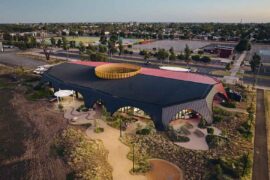
At the Munarra Centre for Regional Excellence on Yorta Yorta Country in Victoria, ARM Architecture and Milliken use PrintWorks™ technology to translate First Nations narratives into a layered, community-led floorscape.

Sydney’s newest design concept store, HOW WE LIVE, explores the overlap between home and workplace – with a Surry Hills pop-up from Friday 28th November.

For those who appreciate form as much as function, Gaggenau’s latest induction innovation delivers sculpted precision and effortless flexibility, disappearing seamlessly into the surface when not in use.
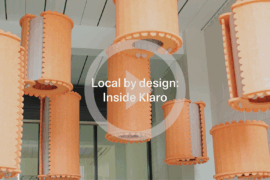
In an industry where design intent is often diluted by value management and procurement pressures, Klaro Industrial Design positions manufacturing as a creative ally – allowing commercial interior designers to deliver unique pieces aligned to the project’s original vision.
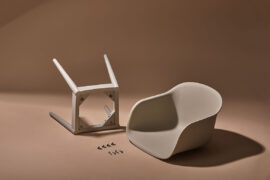
MillerKnoll releases the 2025 Better World Report showcasing how design can drive meaningful change through measurable progress across social, environmental and governance initiatives
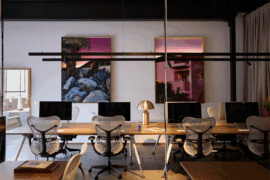
With a minimalist aesthetic and an inventive approach to product, ZETR is challenging the way electrical accessories are designed, made and experienced.
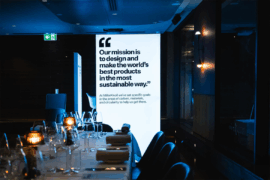
MillerKnoll reimagines the convention of dinner table interactions by plating up a future-forward menu of sustainable design conversation starters as part of the inspiring “Conversations for a Better World” event series.
The internet never sleeps! Here's the stuff you might have missed

Sydney’s newest design concept store, HOW WE LIVE, explores the overlap between home and workplace – with a Surry Hills pop-up from Friday 28th November.

MillerKnoll releases the 2025 Better World Report showcasing how design can drive meaningful change through measurable progress across social, environmental and governance initiatives
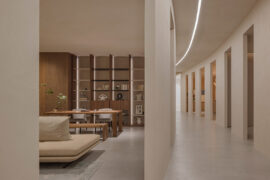
The Simple Living Passage marks the final project in the Simple World series by Jenchieh Hung + Kulthida Songkittipakdee of HAS design and research, transforming a retail walkway in Hefei into a reflective public space shaped by timber and movement.

Merging two hotel identities in one landmark development, Hotel Indigo and Holiday Inn Little Collins capture the spirit of Melbourne through Buchan’s narrative-driven design – elevated by GROHE’s signature craftsmanship.